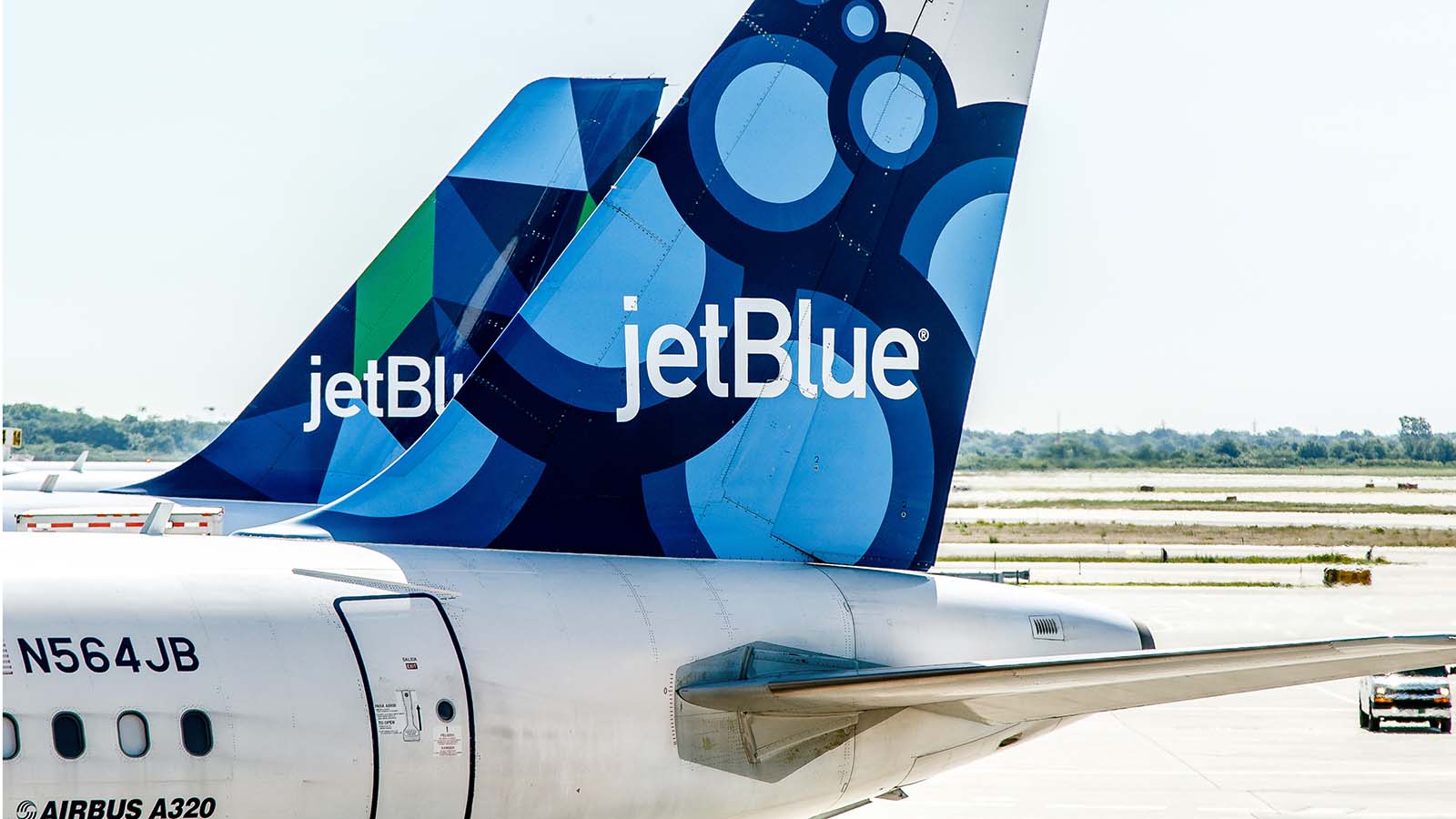JetBlue Airways (NASDAQ:JBLU) is likely to be a survivor. And I think JBLU stock is going to be a winner over the long run.

I am impressed with the company’s liquidity and its ability to survive. On May 7, JetBlue reported that it had up to $3.1 billion in total liquidity as of April 30. Moreover, it had reduced its cash burn to just $10 million a day in May.
In fact, the company said the Cares Act “support” (loans and grants) will reduce its cash burn by another $5 million per day. This will last through the end of the third quarter. Using this information, we can calculate the total hit to its liquidity.
Calculating Cash Burn and the Liquidity Drain at JetBlue
For example, let’s assume that the average burn through April was about $14 million per day. That is because JetBlue said that its burn would fall from $18 million per day to $10 million per day by the end of May.
Next, let’s assume that the May cash burn is about $12 million per day (the average of April’s $14 million and May’s $10 million at month’s end). After May through the end of September let’s assume $5 million per day, as per JetBlue’s instructions.
So here we have the cash burn numbers: April $420 million, May $310 million, June $150 million, July $155 million, August $155 million, September $150. That totals $1.34 billion. Remember the company has $3.1 billion at the end of April.
Now I expect that airline travel will likely have picked up in the next six months. So even if it takes another six months of $5 million cash burn per day, there will be enough liquidity. By that time, JetBlue should turn cash flow positive, or at least close to it.
Getting Positive on JBLU Stock
Bill Miller implied in a recent interview with CNBC, that betting on airlines is like betting on a vaccine. His thesis is that the public will fly and travel on airplanes if there is a vaccine.
The only issue investors need to consider is whether the company can survive until things turn to normal. I have shown that JetBlue should be able to do this.
So I would be positive, and I suggest that JBLU stock may be a long term winner. You might buy it for the portion of your portfolio that you reserve for speculative plays.
Calculating JetBlue’s Future Book Value
How high can it go? That is hard to predict. Let’s assume that at normal capacity the stock would trade at two times its book value.
Right now shareholder’s equity is $4.366 billion, or $16.19 per share. JBLU stock trades for $9.18, or $2.47 billion in market value. So the company is valued by the market at 55% of its book value per share (BVPS).
But we need to make two adjustments to the future book value. First, as JetBlue burns through the cash, the book value falls. That is because the cash flow will be negative. That reduces the future pro forma book value.
For example, JetBlue will burn through $1.34 billion by the end of September based on our calculations above. So shareholders’ equity will fall to $3.026 billion ($4.366 billion minus $1.34 billion).
Second, JetBlue will have a slightly lower BVPS, given dilution. The dilution comes from the government loan warrants and potentially warrants issued to some of its debtholders.
Let’s assume there will be a 20% dilution in the number of shares outstanding. Presently there are 269.7 million shares outstanding as of the end of March. So, with the added warrants (assuming they will be exercised), the number of shares outstanding will rise to 323.64 million.
Now, since pro forma shareholders’ equity will be $3.026 billion at the end of September, the BVPS will be just $9.35 per share ($3.026 billion divided by 323.64 million shares). That means on a pro forma basis, JBLU stock is now trading at 96% of pro forma book value per share ($8.98 dividend by $9.35 per share).
A Target Value for JBLU Stock
Using a target of two times BVPS will put JBLU stock at $18.70 per share. This represents a potential upside of 108% for the stock over the next year or so.
Keep in mind this assumes that the company will start picking up much higher cash flow after September or so. Otherwise, it might burn more cash, lowering its book value further.
Nevertheless, our target price roughly double today’s price seems like a pretty good return. But keep in mind this is a speculative play in the short term. Bottom line: JetBlue should have plenty of liquidity to cover its cash burn until travelers return to the skies.
As of this writing, Mark Hake, CFA does not hold a position in any of the aforementioned securities. Mark Hake runs the Total Yield Value Guide which you can review here.
